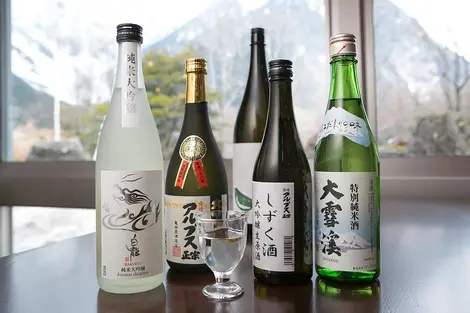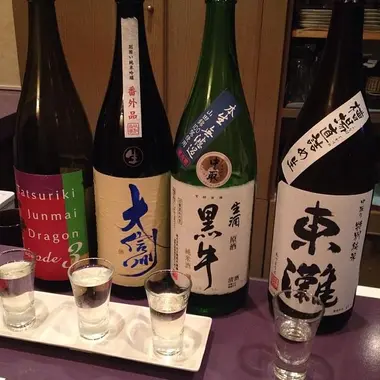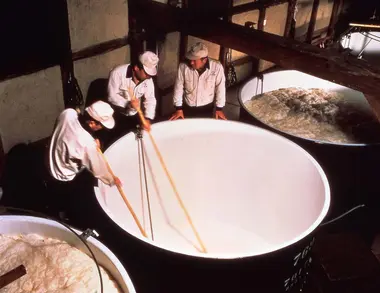Choose sake
- Published on : 13/09/2018
- by : M.H.
- Youtube
Learn to read between the lines
You might want to taste the local Sake, or even bring back a bottle as a souvenir! But how to choose among the many varieties of rice wine? Especially when the label is in Japanese...
Choose at a glance
First of all, you should know that sake is rarely called "sake " in Japanese since this word defines all alcoholic beverages. To have what is called "sake" served in the West, you will have to ask for "nihonshu" 日本酒, literally "Japanese alcohol".
Read: Sake
Know that the old sake houses have beautiful letters in Japanese calligraphy on their labels. There are very good sakes with more recent history, but longevity is generally a sign of quality. We can compare this phenomenon to the domains for the French wines: choose a castle whose name is familiar when in doubt.
Some restaurants offer a wide range of sake. You will be able to contemplate the bottles which are enthroned behind the counter or stored in cool storage. Do not hesitate to ask if you can take a look at their best vintages!
- The degree of polishing
Once the bottle is in your hands, you have to decipher the information on the label. First, try to identify the degree of polishing of the rice used for the fermentation of the sake. This is what determines its class, its taste but also its price.
In general, the degree of polishing is between 40 and 70%. The more polished the rice, the lower the percentage. This rice of which only 40% of the grain remains during fermentation will give a more expensive sake and end in the mouth. However, this does not mean that a sake whose degree of polishing is 70% is not good, it all depends on individual preferences!
The categories of sake according to the degree of polishing ( seimaibuai in Japanese):
- From 70%, a sake can obtain the Junmai-shu classification, provided that no alcohol has been added.
- From 60%, a sake can obtain the Ginjo-shu classification.
- Beyond 50%, a sake can claim the most prestigious appellation, Daiginjo-shu.
- Bottling date
Don't look for 2018, the Japanese use a different way of counting years! Indeed, with each new emperor, his new era and the count start again. 2018 thus becomes the year 30 of the Heisei era. So if you see "30.07" on a bottle, it corresponds to July 2018. In general, sake is consumed in the months following its manufacture, it is very rare to let it age in a cellar.
- Taste indicator
The kanji are in the game! More sweet or dry? amaguchi or karaguchi? 甘口 or 辛口? For an in-between, choose 中口 (nakaguchi). Sometimes it is indicated in numbers, so be aware that the higher the number (it can go up to + 15), the drier the sake will be, whereas as soon as you enter the negatives, the taste will be sweeter. But the taste also varies depending on the temperature at which you taste the alcohol.
Let your taste buds decide
An important criterion before choosing a bottle is whether alcohol was added during manufacturing. This type of sake is called honjozoshu 本醸造酒and has a less pronounced taste since it is diluted. To accompany a meal, we prefer sake whose alcohol is obtained only through the fermentation of rice. In restaurants, there is often a whole list of sakes on the menu. To taste several samples, there is kikizake, which is an assortment of different sakes decided in advance or to compose yourself.
To bring back a bottle from your trip, try shopping malls! These often have tasting booths on the weekends. Do not hesitate to ask the employees to taste several different alcohols. So you can find the sake that suits you best without having to decipher the label for long minutes.
To go further: 10 amazing facts about sake





















